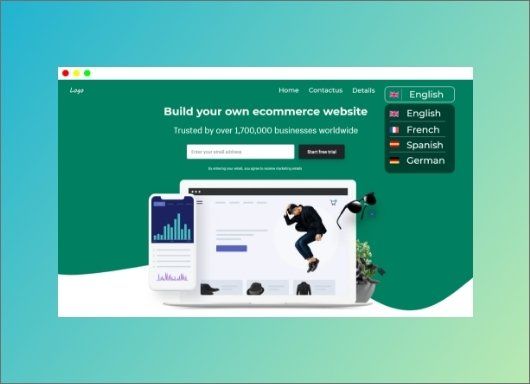What exactly does a software engineer do?
Searched over 49.1 billion images in 0.5 seconds ### 2,500,000,000,000,000,000 (2.5 quintillion) bytes of data are created every single day.
Sunday 25 July 2021
What exactly does a software engineer do?
How To Add Audio To A Website
Already have an account? Log in
How To Add Audio To A Website
You’ve spent a lot of time mapping out a website for your small business customer. You’ve created a beautiful design with great photos, strategically deployed video — and you know what will make it better: the judicious use of sound.
Sound can be an excellent way to stand out from the competition, help visitors remember information (you know all of those brand jingles in your head?), and build an emotional connection with a brand. Audio can even help with SEO rankings when used in the right way.
In short, audio, when used properly, can be an important component of a website experience.
Here are several options for embedding audio on a website.
1. AUDIO HOSTING
An easy way to embed audio on a website is by using a sound hosting site, such as SoundCloud or Mixcloud. All you need to do is upload the file and receive an HTML embed code. Then copy and paste the embed code into the web page’s code or WYSIWYG site editor. This works for most CMS platforms and website builders.
2. ADD AN AUDIO WIDGET ON DUDA
Duda’s highly flexible website builder platform features numerous special tools that make it super easy to add audio to a website while retaining control over how it looks and functions. First, follow the steps above to add the audio file to a sound hosting site. Then, to add it to your web page, select the audio widget from the menu and add the link to the audio file.
With Duda, you can set the layout, play icon, and sizing options using the Design Editor.
- Right-click the widget, and click Edit Design.
- If you are using Mixcloud, you have layout, thumbnail display, light/dark color scheme, and sizing options.
- If you are using SoundCloud, you have layout, play icon color, and sizing options.
3. USE HTML5
You can code audio into your website with the HTML5 <audio> element. When you code it in with the <audio> command and source attribute (src), the default is the browser’s audio default settings. Or you can define some elements of how the audio will play, such as telling it to autoplay or play muted so the user can choose to turn on sound.
Here’s an example from W3Schools:
<audio controls autoplay>
<source src="horse.ogg" type="audio/ogg">
<source src="horse.mp3" type="audio/mpeg">
Your browser does not support the audio element.
</audio>
Or muted:
<audio controls autoplay muted>
<source src="horse.ogg" type="audio/ogg">
<source src="horse.mp3" type="audio/mpeg">
Your browser does not support the audio element.
</audio>
The text between the audio tags will only show if the browser doesn’t support the HTML5 audio element.
4. ADD JAVASCRIPT
If you’re going to code a file into a website instead of using the Duda widget, we recommend using JavaScript in addition to HTML5. JavaScript provides more control to ensure that the audio is integrated into the site and acts as intended. For instance, it allows you to display play, pause, mute, and other control buttons. Other examples: You can set the default to sound off and allow sound to come on with an easy-to-find controller (this is highly recommended because sound can be distracting), and your script can even be programmed to play certain sounds in response to the user’s actions, such as during a quiz.
Here’s an example from JavaScript Tutor for adding a play button and pause controller and script to HTML code:
<audio controls id="music">
<source src="mj.mp3" type="audio/mpeg">
Your browser does not support the audio element.
</audio>
<p>Click the buttons to play or pause the music.</p>
<button onclick="play()" type="button">Play </button>
<button onclick="pause()" type="button">Pause</button>
<script>
var myMusic= document.getElementById("music");
function play() {
myMusic.play();
}
function pause() {
myMusic.pause();
}
</script>
EMBEDDING AUDIO ON A WEBSITE
When you’re ready to take a website to the next level, add some sound elements to it. Duda makes embedding audio simple. And if you need even more control, you can use JavaScript.
Latest Browsers Required
The latest versions of the following browsers should be used when registering on the Province’s system:
- Microsoft Edge Chromium
- Google Chrome
- Mozilla Firefox
- Apple Safari
SE 77655
Manufacturing
L 87643
CES 2021
Your Future Starts here
I know how it feels to be unemployed with no clear path forward
Technology show

CES Las Vegas
IT 55587677
CP 876544
Blog Archive
- January 2022 (5)
- December 2021 (4)
- October 2021 (1)
- September 2021 (1)
- August 2021 (4)
- July 2021 (6)
- June 2021 (5)
- May 2021 (3)
- March 2021 (3)
- February 2021 (3)
- January 2021 (12)
- December 2020 (9)
Search This Blog
-
+ ENGLISH This TikToker’s ‘SCAM’ Cryptocurrency Took Off and He Can’t Believe It "I made this as a joke, no one told you to buy this ...
-
https://home.howstuffworks.com/home-improvement/household-safety/fire-extinguisher.htm How Fire Extinguishers Work BY TOM HARRIS ...




